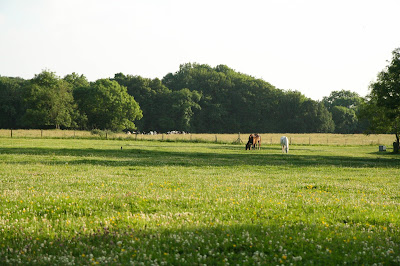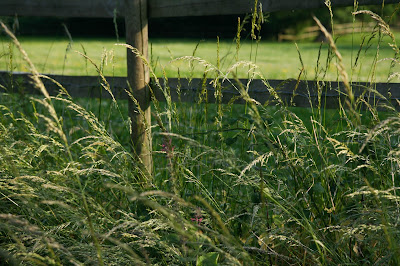It was a relatively hot summer solstice on Wednesday. As an Aussie, I can't in all honesty say 32 degrees is very hot, because memories of 40+ degree summer days are burnt (pun very much intended) into my memory. That horrific day a few January's ago, where I walked out of work and into a 45 degree day to catch a non air-conditioned train home, will stay in my memory forever... That was a stifling summer all over Australia. If you're a weather enthusiast, stats can be seen HERE.
Nevertheless, I'll jump on board the Brits-moaning-about-the-weather bandwagon and concede it was quite a warm, sunny spell for England. Still, I wasn't going to let the glorious, albeit sweaty, solstice sunshine keep me indoors. I slipped into a linen sun dress, grabbed my camera and took a late evening wander around the village to capture some photographic memories of my first summer solstice in Britain.
June has been all about roses in the village. In just about every direction you look, you will see a rose. Climber, rambler, shrub, David Austin, they're blooming and beautiful.
This vivid pink rose is such a vibrant burst of colour on an otherwise uniform honey-stone coloured canvas. That is the Norman church tower of St Andrew's, Castle Combe. Often when I'm outside in the garden, and the breeze is blowing in the right direction I can hear it chime out at 3 minutes past the hour. I'm not sure if it's late, or my clock is running fast. It is a lovely sound no matter, a constant reminder of this rural village idyll I've somehow found myself living amongst.
This farm building at Upper Castle Combe was bathed in the most golden light. It is currently dripping with summer roses. It seemed so apt that on the summer solstice, it was in full flush and aglow with golden hour light. A fertile and abundant representation of the summer season.
I was sticky by the end of my walk, but frankly it was so nice to be able to be outside in the late evening air in just a sun dress and sandals, even if it did mean a cool shower for the third time that day.
I know the passing of the solstice signals a slow slide back towards shorter days, but there is still so much summer to enjoy. The brambles are just emerging in the hedgerows, apple trees are beginning to fruit, the trout in the brook are fattening, and the fields are abuzz with the predictable seasonal rhythm of farm machinery as it frenetically slashes, harvests, bales and ploughs the countryside before the inevitable rains return .
Kate x
























































